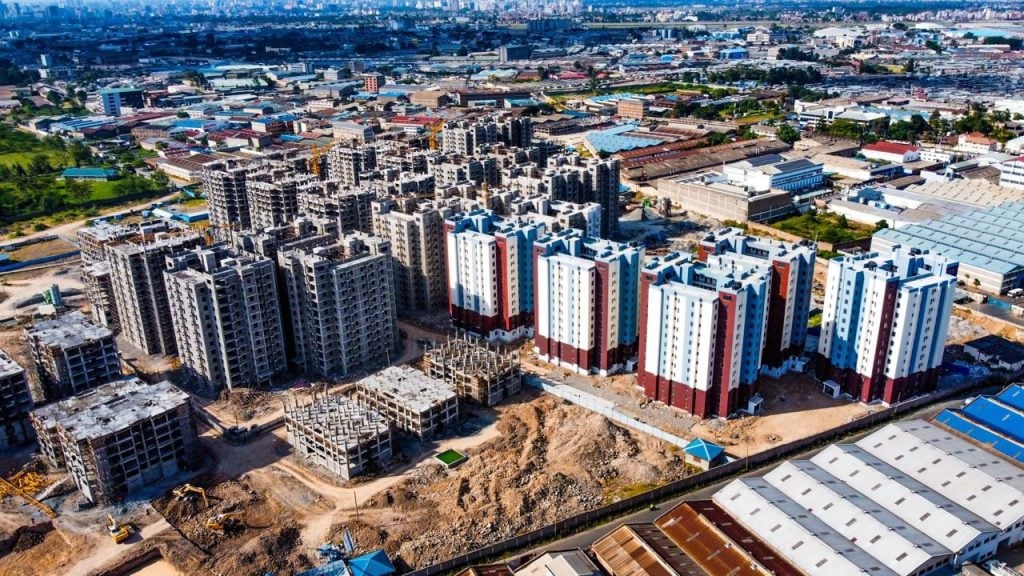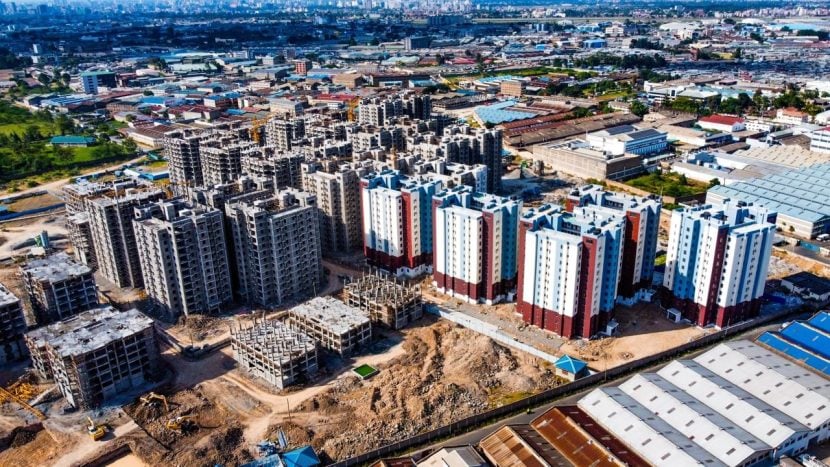Kenya’s Affordable Housing Programme: Promise, Pitfalls and Prospects.

Kenya’s Affordable Housing Programme (AHP) has moved from a campaign promise to an active, law‑anchored policy with a dedicated levy and dozens of construction sites. It is reshaping taxes, urban land use and the mortgage market. This article takes a clear‑eyed look at what has been delivered so far, how the programme is funded, why it remains controversial, and how it compares to proven models in developed economies. The bottom line: the AHP is real and moving, but affordability, governance, and delivery risk will determine whether it fulfills its promise.
What the Government Promised vs. What Has Been Built
- Ambition: Successive administrations have targeted 200,000 units per year to close an annual demand gap often cited at 250,000 units.
- Flagship deliveries:
- Park Road, Ngara (Nairobi): 1,370 units delivered—Kenya’s first AHP flagship.
- Kibera Soweto East Zone B (Nairobi): 4,000+ units planned; multi‑phase slum upgrading with social and affordable housing typologies.
- Pipeline reality: Government communications, lender releases, and sector analyses point to numerous projects under construction across counties. Independent sector trackers suggest limited completed stock to date relative to targets, with a large multi‑year pipeline still in various stages.
Takeaway: Physical delivery exists and demand is demonstrably high (e.g., Park Road demand far exceeded supply). However, completions remain modest compared to stated annual goals, making 200k/year a stretch without sustained financing, land assembly and capacity on site.
How the Programme Is Funded: The Affordable Housing Levy (AHL)
- Rate & base: A 1.5% levy on gross salary (employees) with a matching 1.5% contribution by employers; and 1.5% on gross income for certain non‑employment income.
- Collection: The Kenya Revenue Authority is designated as the collector.
- Relief: Resident individuals who pay the levy qualify for an affordable housing relief equal to 15% of the employee contribution, capped at KES 108,000 per year.
- Legal anchor: The Affordable Housing Act, 2024 – assented to on 19 March 2024 -re‑established the levy after earlier court challenges to its introduction under the 2023 Finance Act.
What this means for households and firms: The levy materially changes take‑home pay and payroll costs. The relief softens, but does not eliminate household impact. For employers, the contribution is an allowable deduction for income tax purposes, but it is still a cash cost that could affect hiring decisions in tight margin sectors.
Legal and Political Timeline
- June 2023: Finance Act introduces a 1.5% housing levy, litigation follows.
- Nov 2023: High Court declares the levy (as framed in the Finance Act) unconstitutional; issues a temporary stay to allow appeal.
- Jan 2024: Court of Appeal maintains the suspension of the levy (as enacted in the Finance Act).
- Mar 2024: Affordable Housing Act, 2024 is assented to, re‑imposing the levy under a dedicated statute and designating KRA as collector.
- 2024–2025: Ongoing political debate continues alongside active collections and project roll‑out.
Why this matters: Legal certainty affects collections, project financing, and investor/lender appetite. Anchoring the levy in its own Act improved certainty relative to the earlier Finance Act route.
Who Can Actually Afford These Homes?
Mortgage dynamics
- Market rates: Commercial mortgage rates have hovered in double digits in recent years.
- Concessional channels: The Kenya Mortgage Refinance Company (KMRC) funds primary lenders, enabling longer tenors and single‑digit/ low‑double‑digit rates on qualifying affordable loans. Some lenders advertise 9%–10% products for eligible borrowers; market‑rate offerings remain higher for others.
Price points & incomes
- Affordability hinges on (i) unit price, (ii) effective interest rate and tenor, (iii) household income stability, and (iv) proximity to jobs (to avoid high transport costs). For low‑income households without formal payslips, access still often relies on tenant purchase schemes, rent‑to‑own, or SACCO‑backed credit rather than traditional mortgages.
Bottom line: The financing ecosystem is improving, but credit access and pricing remain binding constraints for many would‑be buyers.
Jobs, Industrial Policy & Macroeconomic Effects
- Job creation: Government and sector papers often cite 3–5 direct jobs per unit and additional indirect jobs via materials supply chains. If sustained, a scaled AHP could support hundreds of thousands of job‑months annually.
- Construction costs & standards: To keep prices down, policy leans on land value capture, public land provisioning, standardized designs, and Modern Methods of Construction (MMC) where feasible.
Bottom line: Job creation claims depend on actual site activity and local content (cement, steel, finishes). Procurement transparency and timely payments are crucial to keep SMEs and contractors solvent.
Public Criticism: What’s Driving the Backlash?
- Tax burden & regression: A payroll levy is felt immediately by households and firms; critics argue it is regressive for low‑income earners who may never receive a unit.
- Transparency: Concerns that levy proceeds may fund non‑housing assets (e.g., markets, schools) and that allocation criteria and pricing are not always clear.
- Targeting: Skepticism about whether actual unit prices meet the needs of the lowest‑income populations versus lower‑middle income earners.
- Delivery risk: Fears that collections could outpace completions, creating credibility and intergenerational equity issues.
- Location & displacement: Slum‑upgrading and infill projects must be near jobs; if not, relocation friction and low uptake can result.
Government counter‑points: Very high registration/savings and application numbers on the Boma Yangu portal, strong oversubscription at Park Road, and claims of rising private participation are cited as proof of demand and momentum.
Will It Help the Public? A Balanced Assessment
- Yes, if… the State reliably delivers large volumes at predictable prices; KMRC and partner lenders keep concessional loans flowing; and county/state actors secure well‑located land while managing infrastructure and social amenities.
- Not really, if… collections are not transparently ring‑fenced, unit prices drift upward with inflation and material costs, and if informal‑income households remain excluded from end‑user finance.
Early verdict: It is a real, system‑shifting attempt – but its benefits will be uneven unless governance, cost control, and targeting are continuously improved.
Conclusion
Myth or reality? The programme is real and has delivered tangible units and a financing architecture. Whether it becomes the affordability engine Kenyans expect depends on relentless transparency, disciplined delivery, and end‑user finance that reaches low‑income households. With those in place, AHP can bend Kenya’s housing cost curve; without them, it risks becoming a tax‑heavy promise with uneven benefits.
References & Further Reading
Kenya – Law, Collection & Official
- Affordable Housing Act, 2024 (Kenya Law): https://kenyalaw.org/kl/fileadmin/pdfdownloads/Acts/2024/TheAffordableHousingAct__2024.pdf
- Kenya Law (e‑publication of the Act): https://new.kenyalaw.org/akn/ke/act/2024/2/eng%402024-03-22
- Bowmans: Overview of the Affordable Housing Act, 2024: https://bowmanslaw.com/insights/kenya-the-affordable-housing-act-2024/
Courts & Timeline
- Reuters: High Court declares 2023 levy unconstitutional (Nov 28, 2023): https://www.reuters.com/world/africa/kenyan-court-strikes-down-housing-levy-finance-law-2023-11-28/
Projects & Delivery
- Park Road, Ngara – 1,370 units (CSCEC project page): https://en.cscec.com/cpth/HQD/202401/3746679.html
- Boma Yangu portal (registrations, savings, allocations): https://www.bomayangu.go.ke/
Demand, Deficit & Sector Reports
- World Bank (Kenya housing deficit context): https://www.worldbank.org/en/country/kenya/publication/kenya-needs-2-million-more-low-income-homes-building-them-would-boost-its-economic-growth
- Cytonn Research – Progress of Affordable Housing (2023): https://cytonnreport.com/research/the-progress-of-affordable-housing-in-kenya-cytonn-weekly-36-2023




